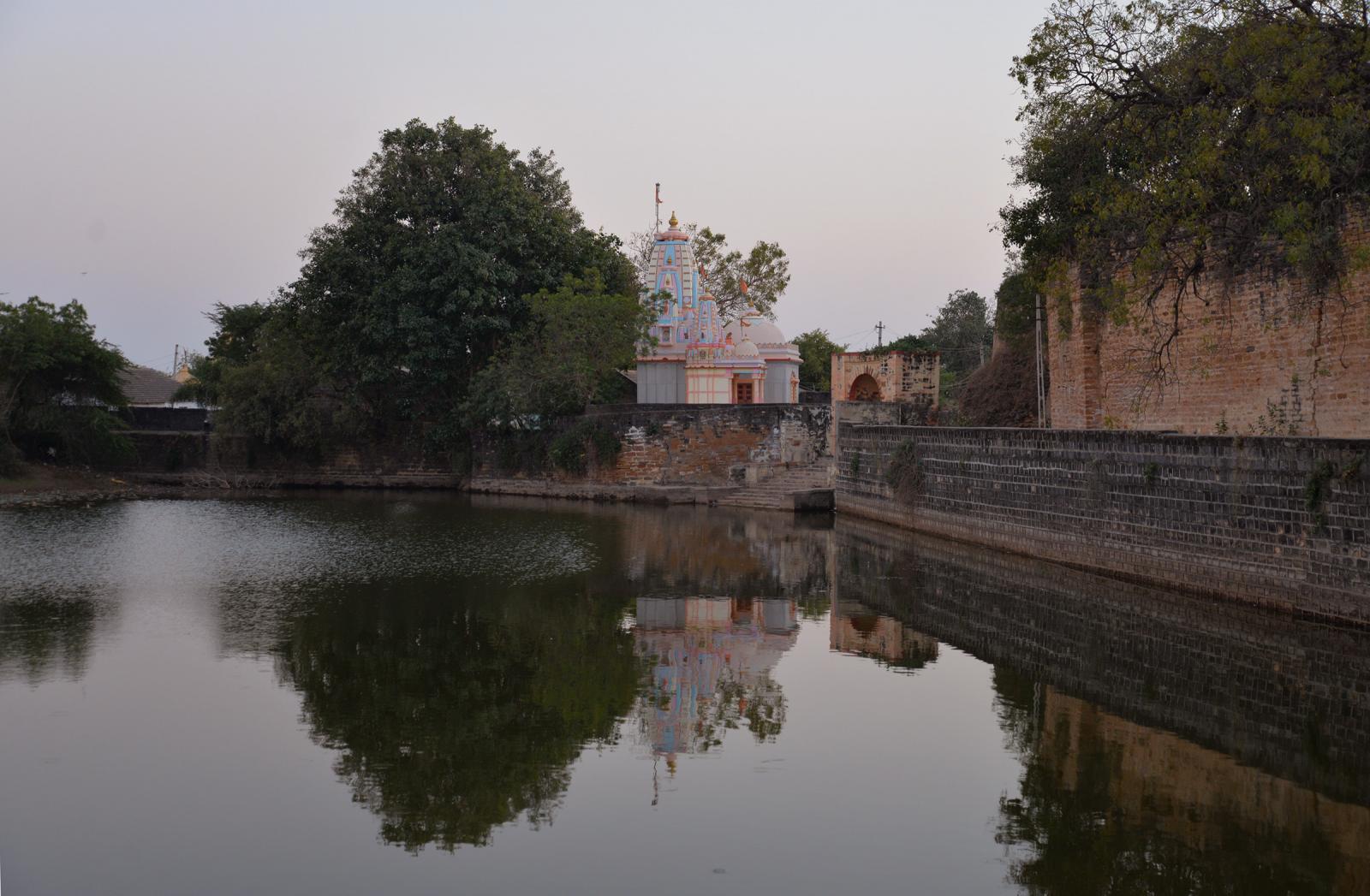The President's Writings

Somaiya Sports Academy - Eklavya
28th March 2024
My mother always wanted me to play a sport. She never did, but her brother, my मामा, played Badminton. And so my mother would make me go to our club - The Willingdon Sports Club and enroll me for coaching. I liked Badminton, but not so much. And then one day when I was 14, I started playing Squash and I continue to do so today - 42 years after I played it the first time.
My grandfather Padmabhushan Shri K. J. Somaiya was 90 years old when he visited Cornell University for attending my graduation when I completed my Masters degree in Chemical Engineering. The ceremony was held in the Athletic field. My grandfather was shown the place sitting on a wheelchair. At that age - he would not have been able to walk so much.
When he returned home, he sent me a letter with a drawing of an athletic track and a small indoor sports facility on the side. He called me and said that he thought about this after seeing the facilities at Cornell.
The image of a 90 year old man on a wheelchair, dreaming of creating a 400 m running track with an indoor facility has stayed with me till today. Much like the image of an old gardener planting a tree that he will never live to see mature and give fruit.
At Cornell, knowledge of swimming was necessary to get the Undergraduate degree. After the receipt of an ID card, the first thing a student was supposed to do was to undergo a swim test. Cornell believed that swimming was a life skill all graduates should have.
We were supposed to do two semesters of any sport. And we could do more. I learned many sports this way and represented Cornell for Squash.
I dreamt of building a world class sports facility. Better than that I experienced as a young boy at the Willingdon Club in Mumbai. Why should access to world class facilities and coaching be restricted to a few clubs where membership could only be inherited or otherwise be too expensive.
And could we provide our students with the sports experience that I had at Cornell.
So we refused to make this a 'club'' even though many asked whether they could become members. The idea is for this to be an athletic facility. Sports for health, sports for teamwork, sports for competition, sports to understand what sportsman spirit is. To play to win, and to also take defeat gracefully. To become champions.
I started managing the Somaiya institutions in 2010 when my father passed away. I planned to build the track as envisaged by my grandfather. People told me not to build a running track. 'Who runs in Mumbai?' They asked. 'Build a Cricket ground' - they said.
I stood my ground. For two reasons. One was the image of my grandfather (sitting on a wheelchair) at my graduation imagining a running track was too strong, and secondly, I thought that if we built a track, we would somehow cater to more sports and so much was being done for Cricket anyway (I have to confess - i like Cricket much more than running and football).
Looking back, the sports facility has evolved into a Somaiya Sports Academy. There is running, athletics, football, basketball, squash, badminton, yoga, climbing, taekwondo, judo, cricket nets and so much more. Seeing the short movie made on our sports facility made me reflect on the past. My mother wanting her child to learn sports, my grandfather dreaming of a world class facility and my own thoughts of making those two dreams a lived reality.
I have named the facility Eklavya. Much imagery behind the choice of that name.
We will continue to build super sports facilities. On the Ayurvihar campus, at our rural school.campuses and one large rural sports facility near Shirdi - in a place called Lakshmiwadi.
Here is the video:
Do watch it. Become a part of it.
Samir
On Opportunity and the difference a Goat made
28th February 2024
Dear Friends
I would like to speak to you about what difference a 'chance' can make.
Last week I was walking around the construction site of the new building 'Sanskriti' which is being built across 'The Somaiya School.' I came across the brick-layer and was asking him about the bricklaying that he was doing. His wife was there as well with their 2 children. I did ask her whether their children went to school. She said that they were from Gujarat and they were in school there, but they had to come to Mumbai for work, and so the kids had been taken out of school for now.
I did ask her whether the children would like to attend school. She looked at me quizzically, wondering about the question and what I really meant. I mentioned to her that there was a Gujarati medium school on our campus, and her children could easily get admitted and their education would not suffer. MInaxi madam from the Somaiya Vinay Mandir (primary) came over and convinced the mother that this 'offer' was for real and the children started attending school the next day.
The idea here is not to speak about a chance meeting, but about opportunity. Many times we see - but in reality do not see. And even if we do observe, and if we can act, we may be blind to our own ability to make a difference.
Dr. Sendurai Mani was on campus delivering the Somaiya Public Lecture earlier this month.
also he gave a TedX talk
His work on cancer metastasis is known worldwide and his paper was cited about 10,000 times. How does Dr. Mani fit into this story?
Dr. Mani was a young student in rural Tamil Nadu and studying in the village school there. On finishing the 6th standard - he needed Rs. 200 to be able to study further in the 7th standard (he had to go to another village). His parents did not have the Rs. 200 to enable him to study further. His grandmother owned 4 or 5 goats. So she gave him one goat and asked him to sell it and use the money for his studies. He sold the goat, got Rs. 200 Rs and that opportunity enabled him to study further and he is today at Brown University in the USA and he is doing seminal work in the study of Cancer metastasis and his research is making major strides in the treatment of cancer worldwide.
What a big difference his grandmother made. So little for many, but so much for her, and still greater impact for him.
Similarly, my grandfather Shri K. J. Somaiya was given an opportunity to trade sugar when he was really struggling trying to make ends meet. And when he was given an opportunity to partner with these Marwadi brothers, he made a great success of the same, built his company and then built Somaiya Vidyavihar.
Opportunity and Chance. Amazing. I am still thinking about Mani's Grandmother the opportunity she provided him.
20th Anniversary of the Congress of World and Traditional Religions in Kazakhstan
11th October 2023
Dear Friends,
Last week, I was invited to Astana, Kazakhstan to speak at the 20th Anniversary of the Congress of World and Traditional Religions. Somaiya Vidyavihar (under the leadership of my late father Dr. S. K. Somaiya) has been working in the field of inter-faith dialogue since the 1980s and we have been working with Kazakhstan all these past 20 years of their Congress. I was invited to speak on behalf of Hinduism.
.png)
Palace of Peace and Reconciliation - shaped like a Pyramid where the conference was held. Picture of me with our faculty Dr. Rudraksha Sakrikar and our Liason - Aisana Kakharman
It was an honour to meet the Chairman of the Senate, His Excellency Maulen Ashimbayev, and His Excellency Bulat Sarsenbayev - Chairman of the N. Nazarbayev Board for Development of Interfaith and Inter-Civilization Dialogue. I thank The Republic of Kazakhstan and President of Kazakhstan, His Excellency Kassym-Jomart Tokayev for their continuing commitment to interfaith dialogue.
.png)
Picture of all of us who participated in the dialogue
The topic was building a 'Building a Fair and Peaceful World'. This theme was also reflected in 'वसुधैव कुटुम्बकम्- 'One Family, One Earth, One Future' which was chosen as the theme of the G20 under the Presidency of India and led by our Honourable Prime Minister Shri Narendra Modi. The topic of 'Building a Fair and Peaceful World' has been relevant at all times and also very much in the times we live in. Praying for Peace in the World.
.png)
Picture of me with His Excellency Bulat Sarsenbayev - with the Ganesh that we gifted them a few years ago - and which stands in the Palace of Peace and Reconciliation.
Somaiya Vidyavihar has been undertaking interfaith dialogues since the 1980s. My father, Dr. Shantilal K Somaiya was an active believer that to work towards a better world it is important to engage in dialogue (संवाद) with people from different walks of life, different beliefs, and different faiths. He also believed that religions have survived millennia, and that there is much to learn from their teachings.
I was amazed at the hospitality that they showed me. I was received at the Astana Airport by Zhanna Assanova - Member of Parliament, and also seen off by her when I left, even though my flight left in the middle of the night at 3:15 am. When I mentioned to her that she need not have taken the trouble, she said that when I had taken the trouble to come all the way, how could I say that it was trouble for her to come and say good bye.
.png)
Azat Serikbossyn (Deputy Head of Mission of Kazakhstan in New Delhi - who accompanied us on the trip), myself, Senator Zhanna Assanova (Member of Parliament) who came to see us off, and Rudrakhs Sakrikar
The link to my talk is at
I give the text of my talk below:
Kazakhstan has for centuries been an example of tolerance and spiritual diversity. Positioned on the silk road, Kazakhstan has been at the crossroads of diverse traditions. Islam, Buddhism, Christianity, Zoroastrianism and other spiritual traditions have coexisted.
We meet today to reaffirm our shared commitment to work towards building a fair and peaceful world. In the Rig Veda, there is a beautiful verse:
संगच्छध्वं संवदध्वं
सं वो मनांसि जानताम्
समानि व आकूति: समाना हृदयानि व: |
समानमस्तु वो मनो यथा व: सुसहासति || ऋग्वेद
“Go together; speak with one another;
Let your minds be of one accord...
May your aim be common,
your assembly common; common the mind, and the
thoughts united... Common be your aim, and your
hearts integrated; your mind be one so that all may happily live together.”
We are here, assembled together, we are in dialogue with one another. We are of one mind. Our aims are common. We are here to speak with each other on how to build a Fair and Peaceful world.
The dialogue that we have is one based on mutual respect and understanding. This dialogue must be meaningful and purposeful. Today, the world is grappling with multiple challenges. The list below is an illustrative (and certainly not an exhaustive list) of these challenges:
- Inequalities in access to Health, Nutrition, Housing, Education, Finance and Opportunity.
- Inequalities within communities (Gender for example)
- Climate Change, Sustainability and loss of Nature and Biodiversity
- Poverty
- Terrorism & Conflict
- Individual vs the Community (at an individual or at a national level)
The Honourable Prime Minister of India - Shri Narendra Modi gave voice to addressing these issues in India’s leadership of the G20. The Delhi Declaration articulated the vision of One Planet, One future, One family. The Declaration laid out goals of financial inclusion, gender equity, digital public infrastructure and more. All working towards a more Just and peaceful world.
The motto of One Planet, One future, One family also finds its roots in Hindu scripture -
अयं निजः परो वेति गणना लघुचेतसाम्!! उदारचरितानां तु वसुधैव कुटुम्बकम् !!
‘This is mine and that is not’ is the thinking of narrow minded people. For the large hearted - the world is a family.’ And so One Planet, One future, One Family
The choice of this motto showed that faith is important. Our beliefs, our traditions, and our spiritual inspirations are important. Timeless sayings have continuing relevance. And that service to humanity is the greatest religion.
Our value systems must remain firm in a turbulent world. In a changing world. Compassion, Truth, Forgiveness, Respect, Honesty and Contentment and Love must underpin our lives and relationships. The world around will change us, but it must not take us away from the fundamental values that make us human.
We meet periodically in Kazakhstan to find strength in our shared experiences, solutions in our shared response to challenges, and to chart out a path forward to address the challenges facing the world today.
The challenges facing us are great, the urgency even greater.
I would like to thank the Republic of Kazakhstan and President Kassym-Jomart Tokayev for their continued commitment to humanity, to articulate a path forward for the Congress as we continue to meet to build peace and harmony in the world.
16th February 2023
Dear Friends
We are celebrating Gaatha, a storytelling festival beginning at 5 pm tomorrow (Friday the 17th of February).
In 1995, Amrita and I were travelling in the Canadian Yukon. Driving towards the town of Whitehorse. On the way, we met a young woman on her way to the Whitehorse storytelling festival. We had no idea what to expect, but we also went there to see what this was all about. It was mesmerizing.
There were storytellers from all over. From Native American storytellers to a storyteller from Boston who superbly used the Harmonica while he told his story. We said to ourselves that it would be nice to have such festivals in India.
Stories are what we grow up with. My नानी would tell me stories before I went to bed. And I would tell my children imaginary stories of different parts of the world - on earth and beyond, while putting them to sleep.
Stories are also what helps us remember the past, and reinvent the future. Stories give us solace, stories entertain, stories inspire, stories help tradition go from one generation to the next.
This is why we have teamed up with the Mumbai Storytellers Society to organise Gaatha - गाथा। Storytellers from around India and from around the world will be on our Vidyavihar campus to tell us stories. The details of the conference are at https://www.gmisf.org/en
Please attend the conference and take advantage of this unique festival.
The opening event is at 5 pm tomorrow at the Gargi Plaza and I look forward to welcoming you there. The festival continues over the weekend.
Sincerely
Samir
Preserving our built and written heritage
27th January 2023
Many of us may have spent time at the Kutchi Haveli on the Somaiya Vidyavihar campus, or even the building at the K J Somaiya College of Physiotherapy in Somaiya Ayurvihar. Both these structures have been built using 'recycled' parts of buildings that were removed to make way for modern construction in the areas where they were located. They represent a wonderful aesthetic that shows our earlier sensitivity to art and architecture.
My family comes from the village of Tera in Kutch. Temples, a Derasar, a Mosque and even a small fort. Outside homes, there is often a stone vessel where families may keep food for passing cows, dogs and cats.
Tera also has three lovely water tanks. One for drinking water, another for bathing and one for washing clothes.
And a lovely step well.
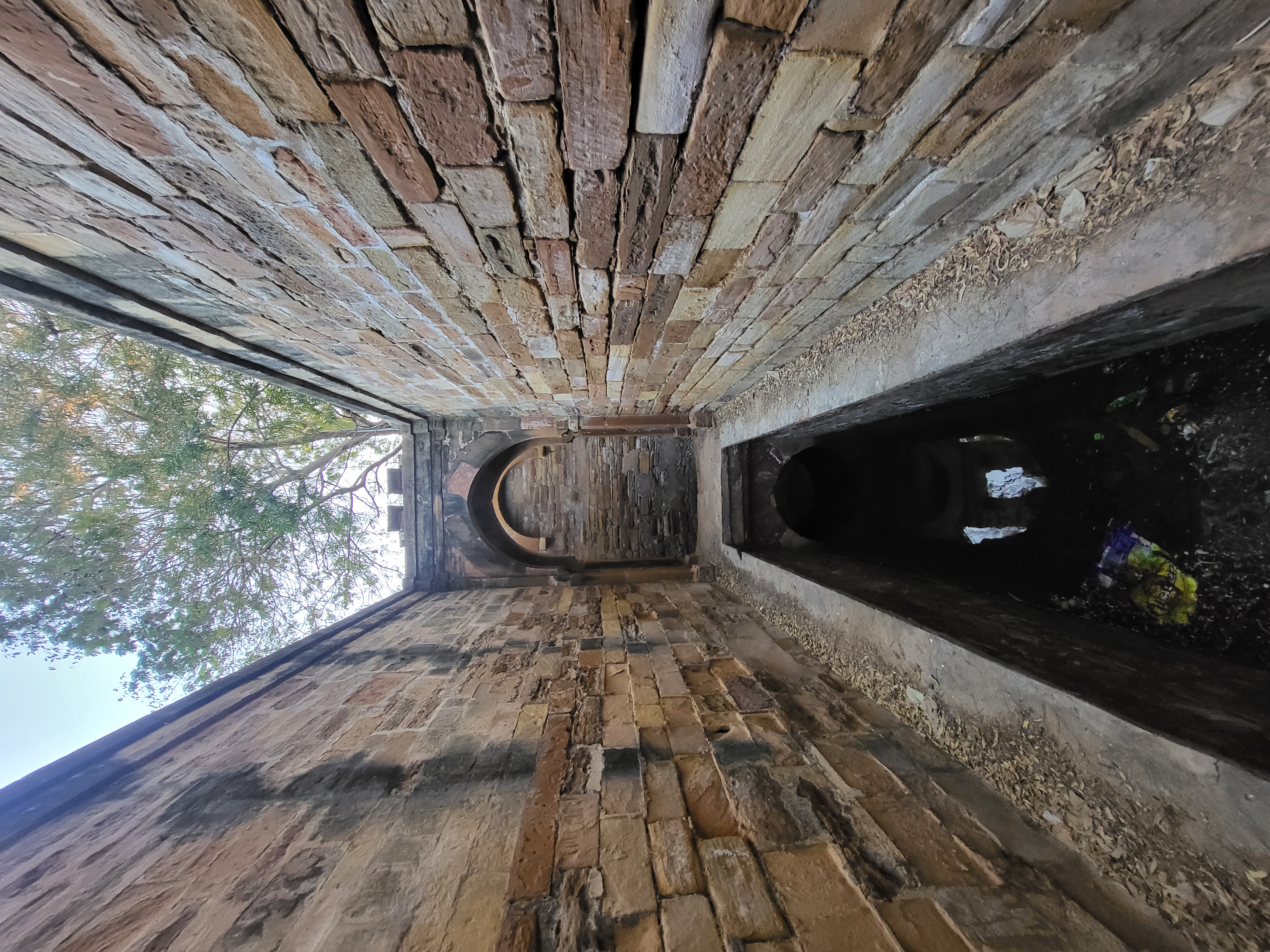
Many villages in Kutch still retain buildings that have their old architecture. I typically visit once or twice a year. On every visit, I see an old house that does not exist anymore. Or an old practice that is forgotten (the street that leads to our home now has a gate on it, to prevent cows from coming in - even though there are still the stone vessels that were once created to feed them). With these changes or loss goes the memory of a past aesthetic, of past methods of construction, of ways of living, and so much more. What can one do?
On one such visit to Tera, I asked the Sarpanch whether the village had a library. The Sarpanch mentioned that there once was a library, but he did not believe that anyone had even opened it in many years. Libraries are windows to the world. Of the past, present, and dreams into the future. Books of various times, places and languages transport us to a wider world that we may not otherwise have an opportunity to visit.
Putting these two thoughts together, I asked whether there were any homes that were in a dilapidated condition that we could adopt and convert into village libraries. And we did. So we worked hard to restore this place and put together our first सोमैया पुस्तकालय in Kutch. And it has become a wonderful place. Used by children and adults alike. https://goo.gl/maps/WWXUZbFcpNMZKjr58
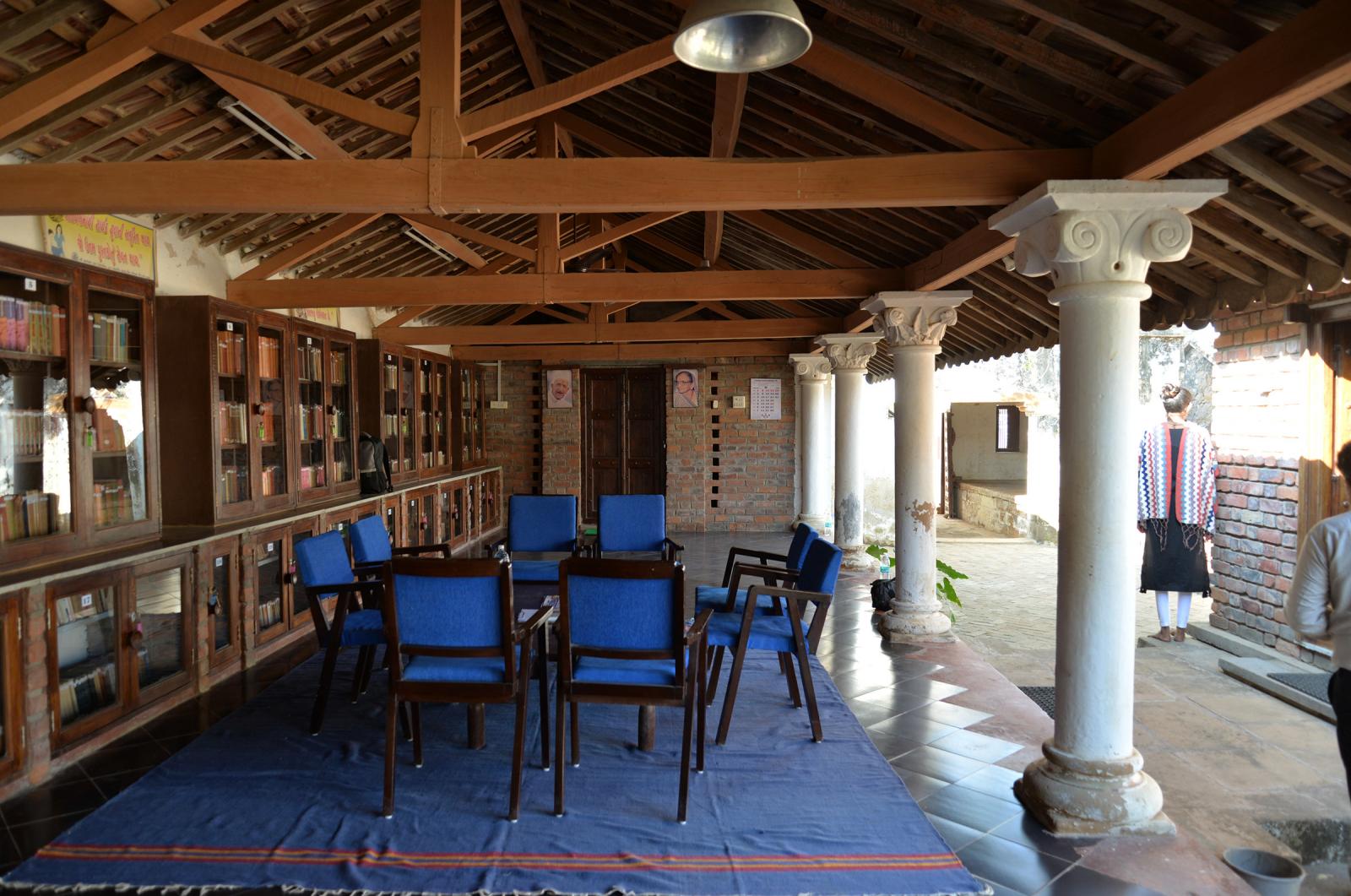
And then we started on our second - in Roha. We came across a place that was falling apart. https://goo.gl/maps/NmjaANHSR8MuGwS58
The owner of the place also allowed us to adopt his place and we started working on this two years ago. Last weekend, we inaugurated it and once again dedicated the space as a library for the village. A young girl I met there who was only 11 years old had started coming to the library even before inauguration, began reading books, and retelling the stories to her classmates. How amazing!!
.png)
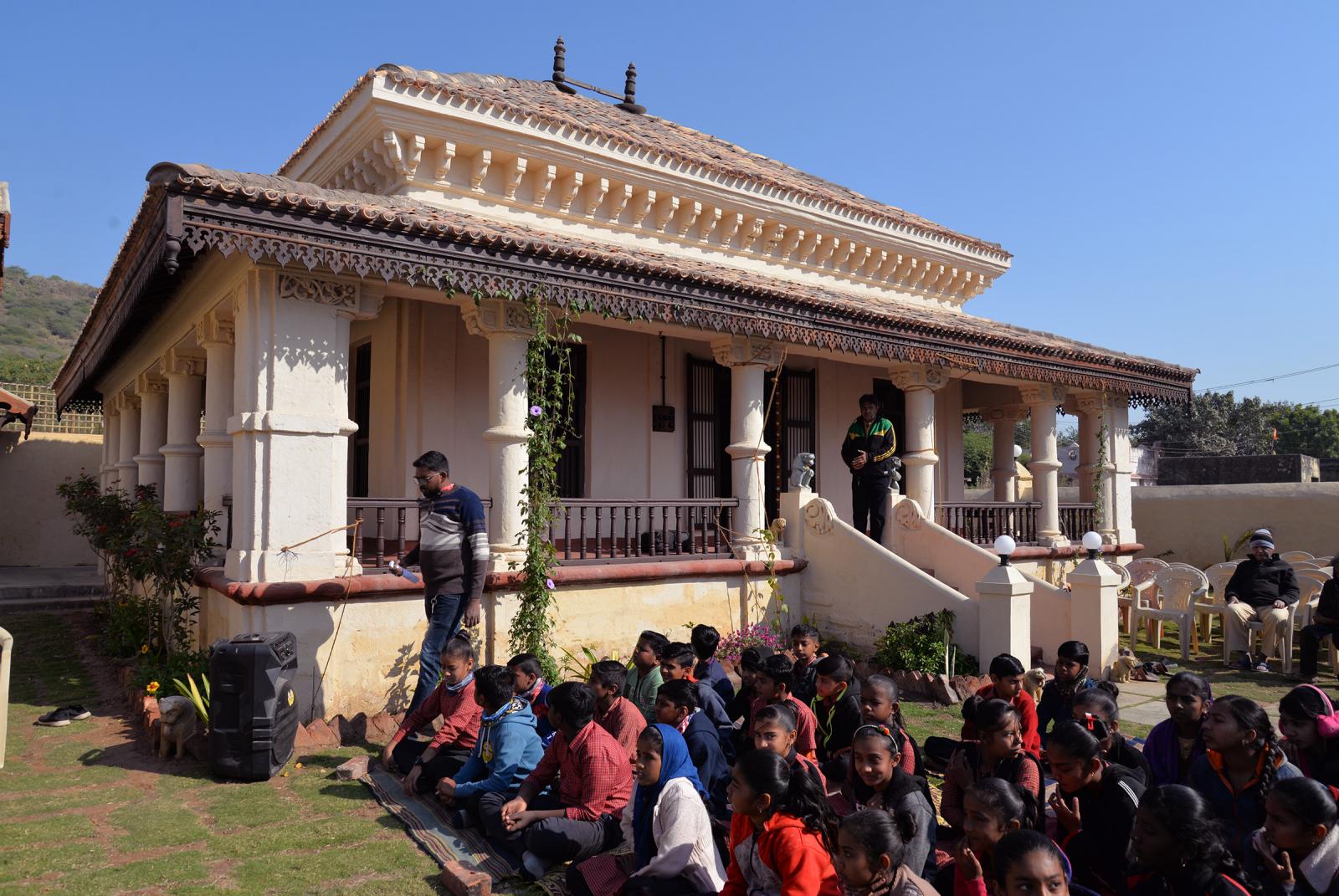
Donors have given us books. Many of them are in Gujarati. These are not read much in Mumbai, but it is the language of instruction in Kutch. In Tera, the librarian showed me a book that was published in 1903. Wonderful literature. Literature that we must also read in addition to current literature.
I think that in this effort, there are many learning opportunities. The preservation of an old aesthetic. In Europe when we travel, we marvel at the beauty of the old buildings and of their villages. In a modern Indian village, there are no remnants of our history. The ability to build and construct in an old style, to understand the pros and cons of those materials and methods as compared to what we are taught now has to remain alive. Only then can we adapt to our context and climate. And these have to be brought into our curriculum.
We have started building a campus in Adipur Kutch to understand these methods. Of masonry, or woodworking, and to create a place for the teaching of design to master craftsmen and women. But more on that initiative in another email. But here I would like to show some images of the new campus we are building, with that old aesthetic in Kutch.
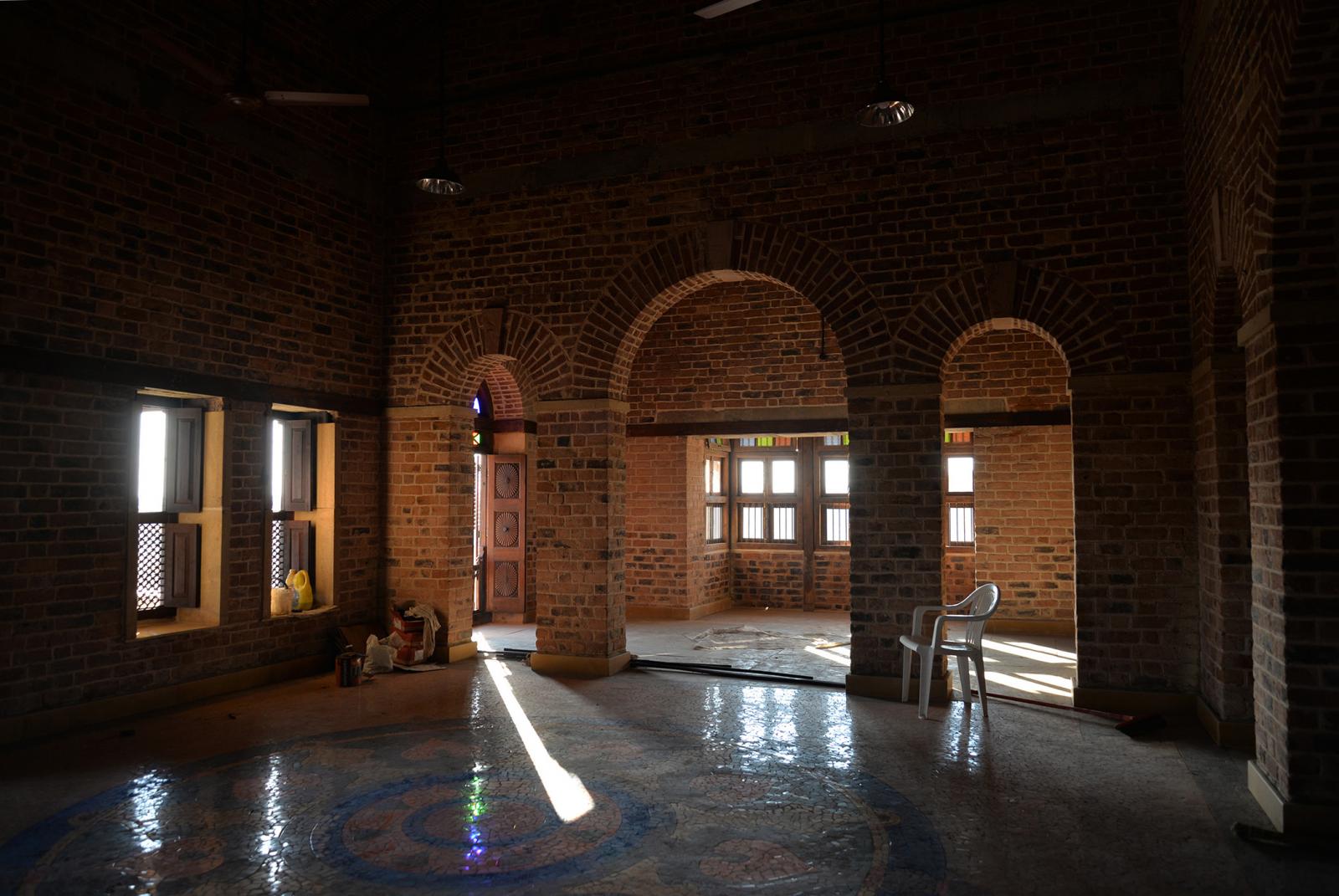
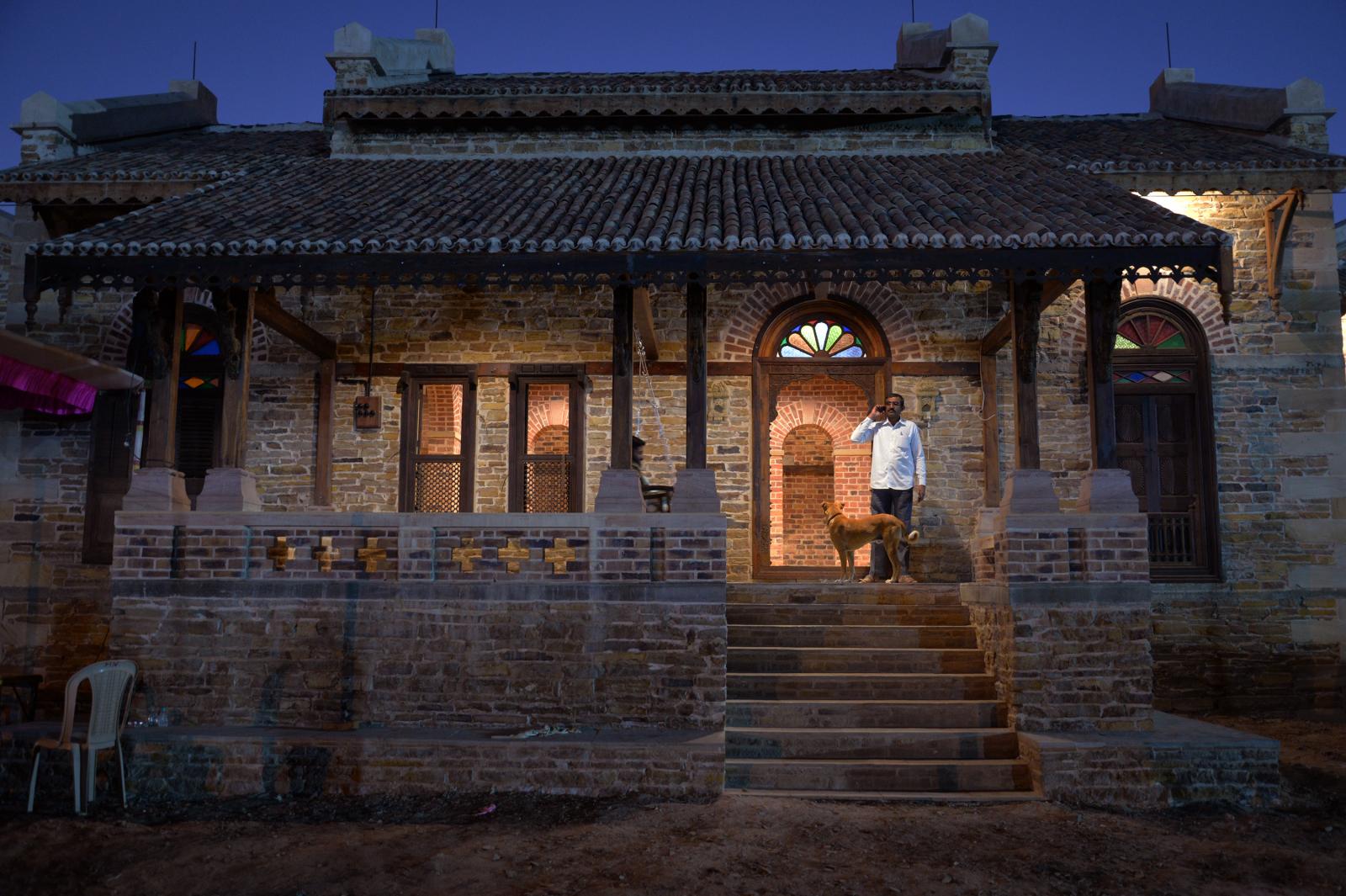
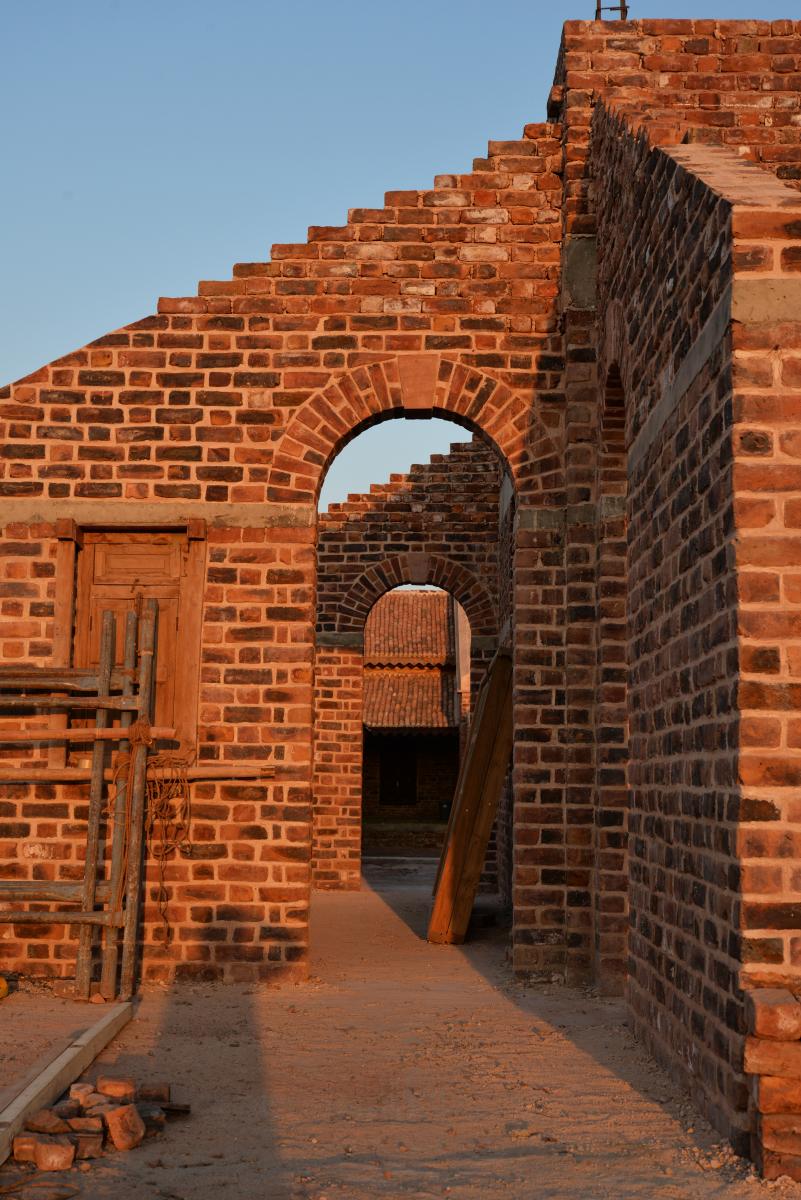
Other places in these villages are becoming available to us for additional 'public' uses. We are contemplating the restoration of these spaces either for the making of tinkering labs and/or spaces of primary health. Tinkering labs will be an interesting initiative. To restore an old place of the past to catalyse a thinking place to invent the future. Our shared heritage and our common tomorrow.
With the hope of a more beautiful tomorrow.
28th December 2022
Dear Friends,
On the first of December, we celebrated our 81st Foundation Day. The weather was lovely and the day was bright.
Why the 81st? Earlier, we took 1959 as the year of Founding. Now, we take this year to be 1942. The Vice Chancellor of Somaiya Vidyavihar University, Dr. Pillai has always maintained that the date of founding of any institution is not the 'legal' date of its incorporation, but the date of the first activity in this domain.
The first initiative in education undertaken by our Founder, Padmabhushan Shri K. J. Somaiya was starting a school in 1942 in rural Maharashtra, in Sakarwadi (Kopargaon Taluka). I agreed with the logic of our VC, and therefore, this was our 81st Founder's day.
This is earlier than when India gained independence from the British. It was in a spirit of nation building, and we continue our journey on that path to build a stronger nation.
We invited Shri Sabyasachi Mukherjee, the Director General of the Chatrapati Shivaji Maharaj Vastu Sangrahalaya - Mumbai to address us. His talk was very interesting, inspiring and provocative. He made many observations, provided insights and gave directions for the future.
He complimented Somaiya Vidyavihar for our efforts to invest in the humanities, arts and culture. He quoted Gurudev Rabindranath Tagore 'Education means enabling the mind to find out that ultimate truth which emancipates us from the bondage of dust, and gives us wealth, not things but inner light, not of power but of love, it is a process of enlightenment, it is divine wealth, it helps in realisation of truth ' 'Teaching must be one with culture, spiritual, intellectual, aesthetic, economic and social. True education is to realise at every step how our training and knowledge have an organic connection with our surroundings.'
He said that our Founder has created a little Shantiniketan in suburban Mumbai. This was the best compliment I would hope to receive.
He spoke strongly and passionately about the adverse impacts of technology, globalisation and power politics on cultural heritage. He said that as the world gets more globalised and homogenous and the notion of identity gets more complicated, there is a great need for places and people of diverse cultures to have places where they can see themselves and their roots, history, memories and future. And that education institutions and museums are probably the only places for people to explore their past and to reinvent their identity in a rapidly changing world.
He spoke much more and I encourage you to see the video and my response that appears almost to respond to his concerns.
On being conferred the 'Knight of the Order of the Star of Italy'
22nd October 2022
This past week, I was conferred the 'Knight of the Order of the Star of Italy'.
I was truly honoured and humbled to receive this. I must recognize the work of my father, Dr. Shantilal Karamshi Somaiya and the entire team at Somaiya Vidyavihar for this honour. The Consul General - Alessandro De Masi presented me this award that was signed by the President of Italy.
.png)
Dr. Shantilal Somaiya started the tradition of reaching out. He believed that the world deserved to be a better place (as we all do). But he felt that the best means of trying this would be to reach out and have dialogue with others.
When I often asked him, how do you speak to people who have 'that opinion'. His answer always was - 'Samir - to achieve positive change, you must have dialogue with those who think differently than you. Talking only to people who are the same as you in opinion will not result in harmonious social change.'
And so he reached out to establish links. Academically, culturally and spiritually. He did much work with Italy.
It is in that tradition that I carried that tradition forward. I have visited Italy many, many times and have also visited the Vatican three or four times. I would like to speak about my visit to the Vatican.
I stayed at the 'Pontifical University - Urbaniana' and was the guest of the then Rector - Father Alberto Trevisol. He spoke no English and I spoke no Italian. Still, with the help of a translator (Father Benedict Kanakapally) we spoke for over 6 hours in our very first meeting. We developed a great regard for each other. At one of our meetings, he mentioned to me that if he would have ever had a son, he would have liked him to be like me. This is what reaching out can do. Different cultures, different religions, different nationalities, different vocations. I would not have imagined that we could be of one mind and think of each other as family if I would have thought of him as 'the other'.
I am deeply grateful to the Government of Italy and the Consul General for giving us this honour.
We have been celebrating the Italian Buzz festival on our campus. Let us keep celebrating the diversity that we all share in this world and keep trying to make it a better place.
9th September 2022
Dear Friends
Somaiya Vidyavihar was founded on the 9th of September, 1959. Today is our Foundation Day. The day we were founded. We normally celebrate on this same day, but have postponed the celebration on account of Ganesh Visarjan today. But celebrate it, we will.
A Foundation Day is a day when we reflect on our past principles and future dreams. In light of the current realities.
Sometimes, when I meet alumni on campus, they say to me, 'this was not there when we were students, wish we had it then'. My response always is that we are always trying to make tomorrow better than yesterday.
What applies to our campus also applies to our world. It is the only world we have, and it is our world. Climate change, sustainability and a world that we are happy to hand over to the next generation is what we have to work for. And above all, a world that is more beautiful to live in. In all ways.
Just last month, we created a new Centre for Regenerative Agriculture. The ideas will be for our students and faculty to have a research site in Northern Karnataka, where we can work on soil science, sustainability, water use, farmer livelihoods, nutrition and more at scale. We need to ensure that our farmers do well. Our soil stays healthy. Our food is nutritious. Our water resources are well taken care of. And we keep meeting our needs for food, materials and energy in a sustainable way. Socially, financially and environmentally.
Similarly, we are working on creating a centre for studying forest ecology and conservation near the Ratapani Sanctuary in Madhya Pradesh. Forests are simply beautiful. One has to just be in one to realise what magic they hold. And forests, their biodiversity, their majesty, their beauty must be preserved if not grown.
And an opportunity to look at design with artisans in Kutch. India is full of gorgeous craft and artisanal work. In Kutch we have created a centre that works with artisans to teach them marketing and design. To show them what the world looks like. Similarly, we need to understand the world of natural colours, the traditional arts, the master craftsmen and women.
All of what I have mentioned will be 'boots on the ground' initiatives under the broader Somaiya umbrella. These are real opportunities for our students, faculty and researchers to visit, study, research and work. To see the world in a different perspective and live the education experience differently.
A couple of months ago, Vishal Gondal (founder of GOQii) released a podcast in which he interviewed me. The interview was recorded a year ago and in one take. Vishal asked me a series of questions on our history and much of what he asked digs into the philosophy of our Founder Shri K J Somaiya and the founding principles of all he did. It is a commitment we continue to follow and take forward. Do listen!!
पुन्य तिथि of Sakarben Somaiya 18 July 1995
21st July 2022
Dear Friends
The 18th of July (Monday - a couple of days ago), is the date when Smt. Sakarben Karamshi Somaiya Passed away. It was 1995.
Our D. Ed. College is named after her.
She was one of the Founding Trustees of Somaiya Vidyavihar. She was the strength behind our Founder Padmabhushan K. J. Somaiya.
She always said in Kutchi - જી વડ્ડો રખજે - Have a big heart.
And she created a culture of hospitality and making one feel at home. She truly embodied the Sanskrit - अतिथि देवो भव: - A Guest is a manifestation of God and should be treated accordingly. But here, who is a guest - अतिथि - अ + तिथि my father used to say. One who comes without a date. An unannounced visitor. And she used to treat all guests - whether announced or unannounced as equivalent to God.
In this day and age, we do not think twice about thinking, speaking or broadcasting negatively of others.
Sant Shri Morari Bapu in a Katha a year ago spoke about her and the remorse she felt when she referred to another as a 'बेचारा'
I do hope that we can cultivate in ourselves, a big heart, her sense of respect to all, and an ability to correct ourselves when we do what we believe to be wrong.
I attach the video clip below.
On Building Peace - In Memory of Dr. Shantilal Karamshi Somaiya
1st January 2022
Dear Friends,
Happy New Year to all of you.
It is the first of January 2022. Dr. S. K. Somaiya passed away on this day, in 2010 in Australia where he had gone to speak at the Parliament of World Religions. The Title of the lecture he was going to deliver was 'Sharing Wisdom in Search of Inner and Outer Peace'. He led the Somaiya Trusts from 1999 till 2010.
He was ahead of his time. He pioneered the manufacture of ethanol from sugar and the use of ethanol (renewable feedstock) as a feedstock to make biochemicals, way back in the early 1960s. The idea of manufacturing chemicals based on renewable feedstock as a basis of sustainable development is only now finding place in the world as a means to address climate change.
In business, he is was an industrialist. What would be considered as a 'Capitalist'. But amongst his friends were people who would be Socialists. he firmly believed that good capitalism implied being agents of social change and that organisations must live in and give back to the societies they serve. Again, we hear about Corporate Social Responsibility now. What he spoke about and did, was the responsibility of the Private Sector in working towards building a stronger and more inclusive society.
Among the many things he did, I would like to speak about his emphasis on dialogue. He always believed that one must speak to all shades of opinion with full respect even if and especially if they had different opinions from you. He said it was easy to retreat in one's own cosy corner, criticise and make assumptions about others whom we believe to have differing opinions. (In today's age of social media, this is even more real - with news feeds based on one's 'preferences' automatically comes to one's mobile device.)
When I would ask him as to why he 'entertained' discussions with people with radically different and opposing opinions, he would answer that to have meaningful change, in pursuit of a society we wish to create, a dialogue, a संवाद ( as opposed to विवाद) is necessary. And so he engaged with people across the spectrum, (not the divide) knowing fully well that we were not all followers of the same faith or ideologies. But we all had some common purpose. And that dialogue was a way to find that common purpose, and bridge differences gently.
In dialogue, his great contribution was to interfaith dialogue. He believed that religions, in their true message and spirit, have much to contribute to society and the world. And that progress towards a more harmonious society can be achieved with the working together of religions and by finding common purpose between religions.
As a Hindu, he believed in strengthening the religion from within. To work against the inequities of the caste system. To spread the true message of सनातन धर्म. To build a more inclusive society. He also reached out to members of other religions. He felt that it was 'religion that binds the individual to Divinity and to other fellow beings'. He believed that people of different faiths had to come together to build a world where there is harmony and to 'Build Peace Based on Tolerance, Mutual Respect, and Cooperation'.
It is written in the Vedas -
संगच्छध्वं संवदध्वं सं वो मनांसि जानताम्।
Let us walk together, Let us Speak with one another, Let us be of one mind.
Let us work towards building that more beautiful and peaceful world!!
Sincerely
Samir Somaiya
The picture below shows a few of his pictures with:
Swami Prabhupadji
Swami Tadrupanandji
Grand Mufti of Kazakhstan
Ravishankar Maharaj
Swami Chinmayanandji
Sant Shri Morari Bapu
Pandurang Shastriji
Shankaracharya Jayendra Saraswatiji
Acharya Mahapragyaji
Pope John Paul
The Dalai Lama
Pramukh Swami Maharaj
.png)
